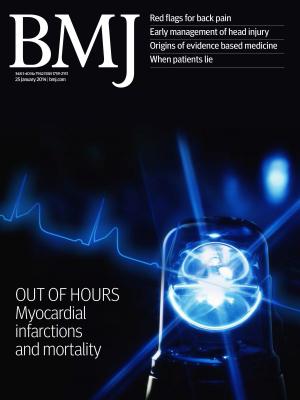
Accelerated exercise rehabilitation improves early function after ankle sprains

Accelerated exercise rehabilitation improves early function after ankle sprains
Effect of accelerated rehabilitation on function after ankle sprain: randomised controlled trial
BMJ. 2010 May 10;340:c1964. doi: 10.1136/bmj.c1964Synopsis
101 patients with an acute grade 1 or 2 ankle sprain were randomized to be managed with an early therapeutic exercise program or a conventional PRICE (protection, rest, ice, compression and elevation) protocol. It was observed that after early incorporating therapeutic exercises during the first week after an ankle sprain brings about significant improvements in physical activity and improved functional status compared to the standard treatment at weeks 1 and 2. At 16-week follow-up, both groups had good and comparable ankle function.
Was the allocation sequence adequately generated?
Was allocation adequately concealed?
Blinding Treatment Providers: Was knowledge of the allocated interventions adequately prevented?
Blinding Outcome Assessors: Was knowledge of the allocated interventions adequately prevented?
Blinding Patients: Was knowledge of the allocated interventions adequately prevented?
Was loss to follow-up (missing outcome data) infrequent?
Are reports of the study free of suggestion of selective outcome reporting?
Were outcomes objective, patient-important and assessed in a manner to limit bias (ie. duplicate assessors, Independent assessors)?
Was the sample size sufficiently large to assure a balance of prognosis and sufficiently large number of outcome events?
Was investigator expertise/experience with both treatment and control techniques likely the same (ie.were criteria for surgeon participation/expertise provided)?
Yes = 1
Uncertain = 0.5
Not Relevant = 0
No = 0
The Reporting Criteria Assessment evaluates the transparency with which authors report the methodological and trial characteristics of the trial within the publication. The assessment is divided into five categories which are presented below.
4/4
Randomization
3/4
Outcome Measurements
4/4
Inclusion / Exclusion
4/4
Therapy Description
4/4
Statistics
Detsky AS, Naylor CD, O'Rourke K, McGeer AJ, L'Abbé KA. J Clin Epidemiol. 1992;45:255-65
The Fragility Index is a tool that aids in the interpretation of significant findings, providing a measure of strength for a result. The Fragility Index represents the number of consecutive events that need to be added to a dichotomous outcome to make the finding no longer significant. A small number represents a weaker finding and a large number represents a stronger finding.
Why was this study needed now?
Ankle sprains are very common musculoskeletal injuries with acute side affects, such as pain and loss of function. A passive treatment approach involves protection, rest, ice, compression and elevation. This approach is common for all soft tissue injuries, which raises the question as to whether a more accelerated protocol would be effective in improving recovery and long term outcomes from ankle sprains.
What was the principal research question?
Does an accelerated intervention involving exercise confer additional benefit compared to the standard treatment of protection, rest, ice, compression and elevation in patients with ankle sprains, 16 weeks after treatment?
What were the important findings?
- Overall treatment effect favoured the exercise group for improved physical activity at week 1 (baseline adjusted difference in treatment 5.28, 98.75% CI 0.31-10.26, p=0.008) and week 2 (baseline adjusted difference in treatment 4.92, 98.5%CI 0.27-9.57, p=0.0083)
- The exercise group was found to be significantly more active when analyzed through time spent walking (p=0.029), average number of steps taken daily (p=0.021), and numbers of steps taken daily (p=0.047).
- At weeks 3, 4, and 16, there were no significant differences in pain at rest, pain on activity, or swelling, and the re-injury rate was the same between groups (4%).
What should I remember most?
At the first and second week, the group receiving the accelerated intervention reported increased amounts of physical activity, had improved ankle function, lesser swelling, and pain compared to the group receiving standard care. At 16-week follow-up, there was no significant difference in ankle function between the two groups, and the reinjury rate was the same between groups.
How will this affect the care of my patients?
Accelerated exercise rehabilitation received during the first week after an ankle sprain is an effective method to improve early ankle function. Patients who partake in the accelerated interventions are more physically active than those receiving standard treatment.
Learn about our AI Driven
High Impact Search Feature
Our AI driven High Impact metric calculates the impact an article will have by considering both the publishing journal and the content of the article itself. Built using the latest advances in natural language processing, OE High Impact predicts an article’s future number of citations better than impact factor alone.
Continue



 LOGIN
LOGIN

Join the Conversation
Please Login or Join to leave comments.